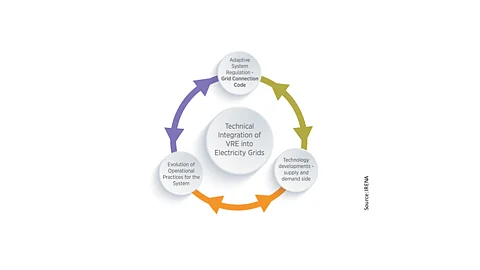

For the successful integration of variable renewable energy in the electricity network, grid codes are important. These codes ought to define the roles and responsibilities of the government as well as the grid operator, and also set compliance verification mechanisms.
In a report released on May 12, 2016, titled 'Scaling Up Variable Renewable Power: The Role of Grid Codes', the International Renewable Energy Agency (IRENA) provides 'guidance for countries with ambitious VRE targets to develop grid codes that assure power system security'.
Need for grid codes
The report emphasizes the role of grid codes for the successful integration of VRE. For this to happen, there has to be collective work on all three fronts, namely technology, operation and regulation. It says that the set of grid codes can include connection codes, operating codes, planning codes, market codes among others. Once things are in place, then it helps to 'ensure the fair treatment of generator owners and operators concerning grid connection while maintaining system stability and reliability'.
Recommendations & case studies
The report suggests the elements necessary in developing a national VRE grid code. These include, preparation of technical studies, data collection and assessment of country-specific aspects among other things, and also revision of the policy after implementing the grid code. It recommends on how to develop and revise grid codes for the integration of a higher share of VRE.
It shares case studies of countries that have ambitious VRE targets to develop grid codes to assure power system security, such as Australia, Barbados, Germany, Ireland and the Philippines. The report analysis the grid code landscape in these nations and learnings from their example.
For instance, it looks into the issue of resolving the 50.2 Hertz problem, which has been triggered by solar power penetration into low-voltage systems in Germany. On the other hand, Barbados is a nation taking baby steps to grid code development with high VRE targets, and Ireland facing challenges of integrating wind power without strong cross border interconnections. Among the recommendations, it stresses on ensuring an appropriate process for developing a national grid code depending on specific requirements of that particular nation and its overall VRE target, technical requirements, regulatory support in the form of national policies and legislation and generator compliance which will be crucial for the successful use of grid code.
The report can be accessed here.
